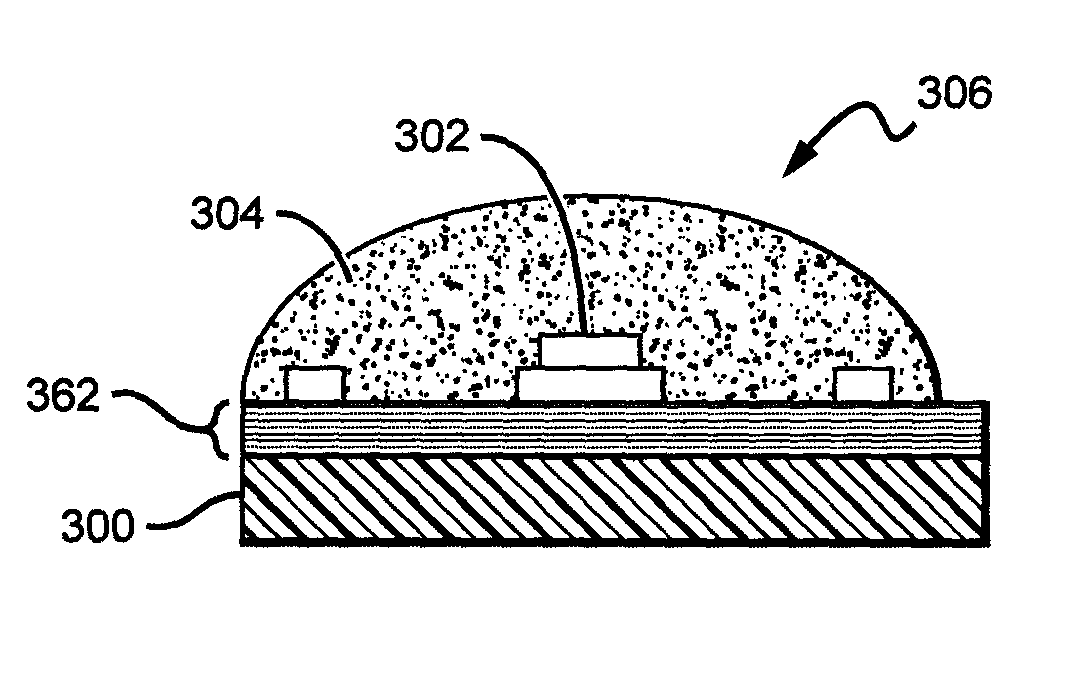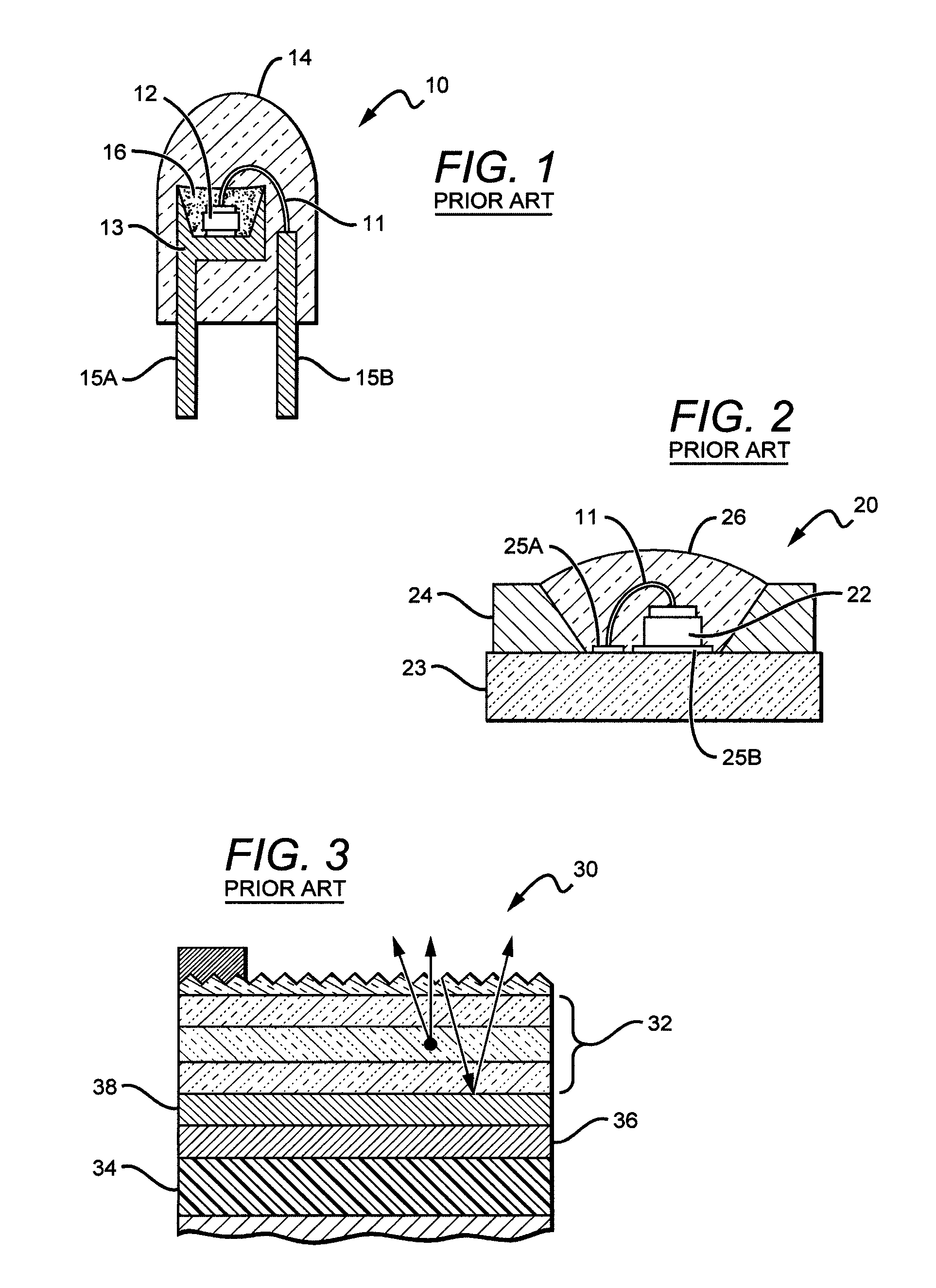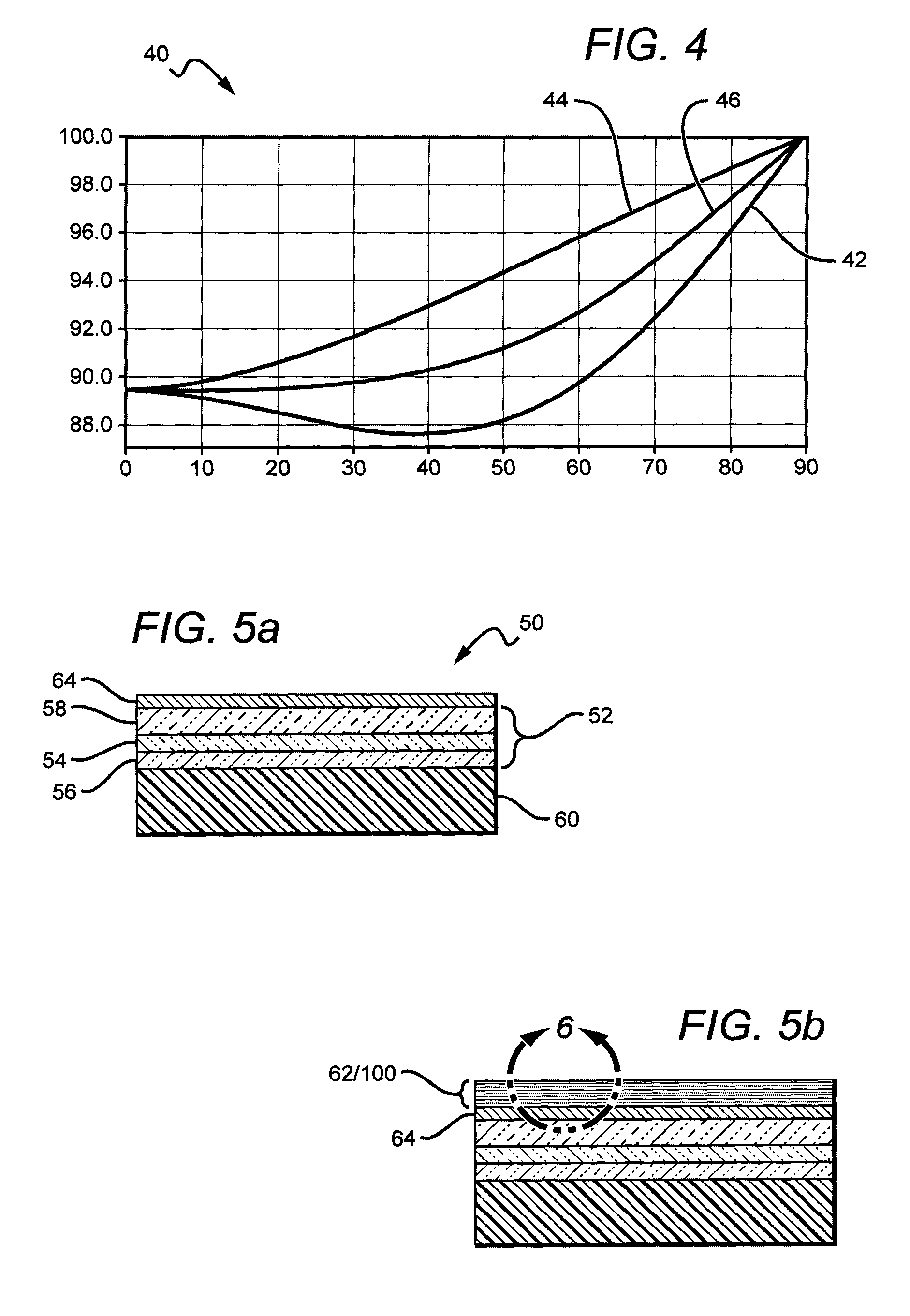Composite high reflectivity layer
a high reflectivity, composite technology, applied in the direction of optics, instruments, optical elements, etc., can solve the problems of light being absorbed by the reflector cup, optical loss may occur when the light is reflected, and limited external quantum efficiency, so as to achieve a higher reflectivity layer and increase emission efficiency
- Summary
- Abstract
- Description
- Claims
- Application Information
AI Technical Summary
Benefits of technology
Problems solved by technology
Method used
Image
Examples
Embodiment Construction
[0053]Embodiments of the present invention are directed to solid-state emitters and methods for fabricating solid-state emitters having one or more composite high reflectivity contacts or layers arranged to increase emission efficiency of the emitters. Embodiments of the present invention are also directed to solid-state emitter packages and methods for fabricating solid-state emitter packages having one or more composite high reflectivity layers arranged to increase emission efficiency of the emitters. The present invention is described herein with reference to light emitting diodes (LED or LEDs) but it is understood that it is equally applicable to other solid-state emitters. The present invention can be used as a reflector in conjunction with one or more contacts, or can be used as a reflector separate from the contacts.
[0054]The improved reflectivity of the composite contact / layer (“composite layer”) reduces optical losses that can occur in reflecting light that is emitted from ...
PUM
 Login to View More
Login to View More Abstract
Description
Claims
Application Information
 Login to View More
Login to View More - R&D
- Intellectual Property
- Life Sciences
- Materials
- Tech Scout
- Unparalleled Data Quality
- Higher Quality Content
- 60% Fewer Hallucinations
Browse by: Latest US Patents, China's latest patents, Technical Efficacy Thesaurus, Application Domain, Technology Topic, Popular Technical Reports.
© 2025 PatSnap. All rights reserved.Legal|Privacy policy|Modern Slavery Act Transparency Statement|Sitemap|About US| Contact US: help@patsnap.com



